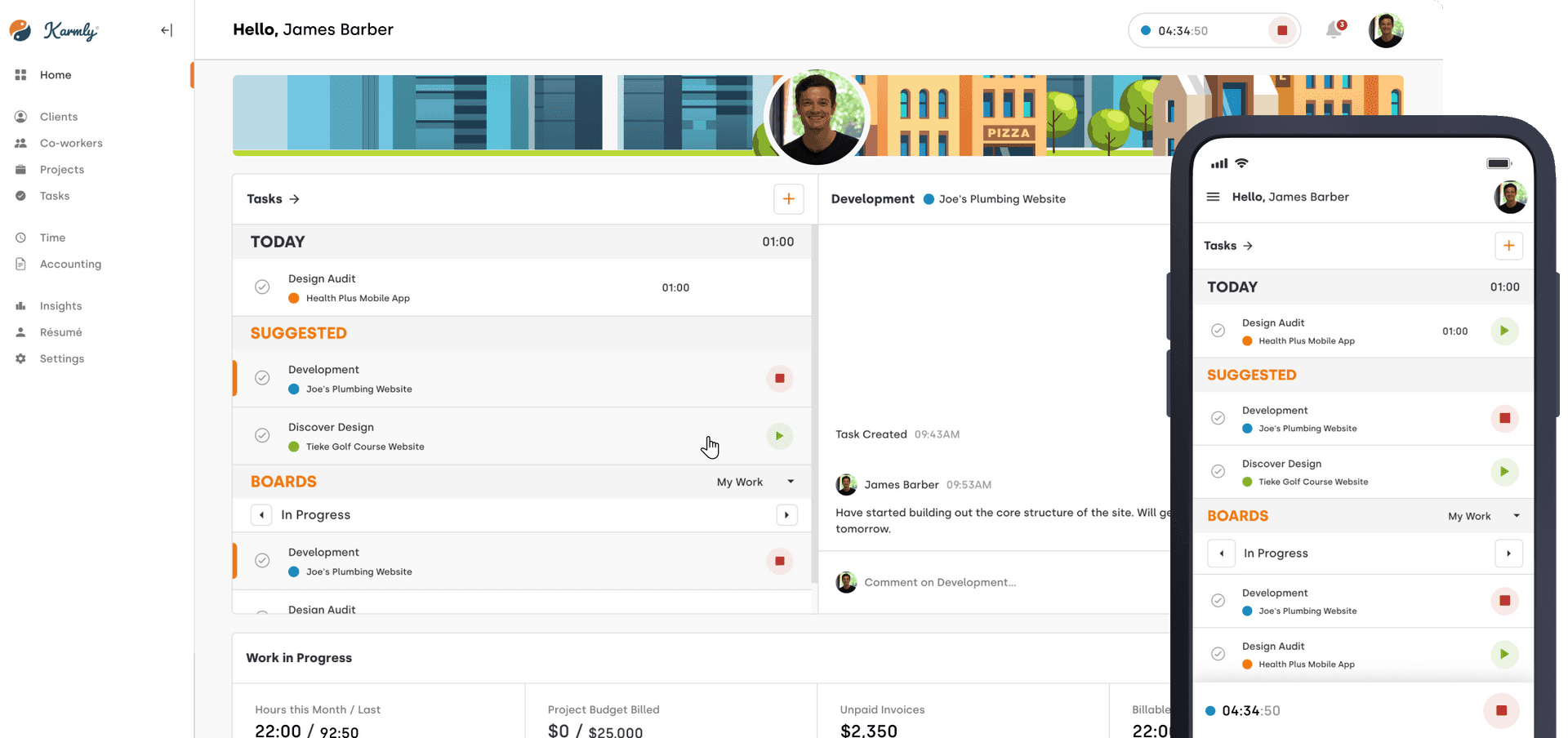When you have a freelance or consulting business, it can be a challenge to find the right number of clients to deliver a workflow that feels manageable and provides an adequate level of income.
Sam Grover has found ways to achieve the balance. While he enjoys writing, he finds more motivation in the running of his business. Building a network, creating a pipeline, and adapting his workload to suit the needs of his life situation are what really drives him.
Create a sustainable pipeline
Sam’s entry to full-time freelancing followed several years of working in-house for three different employers. Initially moonlighting as a copywriter, in 2017 he made the leap to work on website copy and content strategy, and realised that to succeed he would need a healthy pipeline of work. To put this in place, Sam reached out to everyone he had worked with over the last ten years.
“Honestly, it was probably the best sales and marketing thing I’ve ever done. It helped me get off the ground and up and running.”
Some contacts had work for Sam, and others were eager to refer his services to others. “Everyone started referring quite quickly; I was touched by it.”
When you’re starting out the key is getting work in the door and learning how to work with your clients, Sam says. “Don’t get too bogged down in pricing and budgets — but do make sure you keep track of what projects you’re doing and what you’re charging. You’ve just got to get in and do it.”
In the first year or two, Sam says it’s common to have some level of stress and anxiety to keep you hungry and looking for work, with the desire to say ‘yes’ for all work that comes along. When you’re more established, you can have a more strategic approach to what work you accept, he says.
Pay attention to your inbox
An advantage of managing your pipeline is the flexibility to scale back. For Sam, this meant he could reduce his workload to three shorter days to care for his children. “Being able to scale the business down has been great, and that’s something you can’t do with a huge business.”
Yet, it can be a different story when the work’s not flowing so smoothly and it’s not by choice. That’s when the panic starts to set in. Sam says he would sometimes be so busy working and meeting deadlines that he didn’t notice that new leads weren’t coming in, or that he wasn’t completing as many proposals. “You need to be aware. I had to get serious about keeping an eye on my sales pipeline, rather than assuming the work was coming in.”
To do this Sam would track how many conversations he’d had in the past week, and how many proposals he had out. The next step was to start reaching out to people again, including those he already had a relationship with and seeing if they needed work. “Talk to everyone,” says Sam. “I talked to every single person I could—even if you’re in line at a cafe.”
It’s worth working on having the right mindset to deal with dry patches, he says, which is something he’s getting better at over time. “It’s not related to your accomplishments, so just accept the work will eventually come in, even if it’s a bit of a terrible time until it does.”
And when the pipeline is moving again, Sam’s approach is to talk to people, and understand what needs to be done, along with a lot of research for inspiration and context.
“Then it’s just a matter of doing it.”
Find a fee model that works, for you and the business
Value for both himself and his clients is the key reason Sam has a fixed fee pricing structure. It’s not an easy task to assess accurately how long a piece of work is going to take, and his experience means that he’s able to do a really good job in a shorter time.
“Fixed fee gives certainty to both myself and my clients. I’m able to manage my pipeline of work without any holes in my budget, and I know when I’ve hit my goal for the month. There’s no ambiguity.”
Tools of the trade that prove their worth
When prospective clients want some certainty around the scope and quality of service they’re going to receive, it’s all about portfolios and proposals. But Sam’s not really a fan of either. “I don’t show a portfolio upfront because how does a client know if something similar is actually going to achieve their goals?”
His website is a portfolio of sorts—a live brochure of what he delivers—along with service, pricing, and contact details. LinkedIn is also a huge source of referrals. “I keep up the discipline of constantly posting whatever’s on my mind. It’s great because LinkedIn shows you to new people and keeps you top of mind by engaging and providing people with your expertise.”
As for using a software solution for managing proposals and contracts, Sam says he has recently added one to his business, with the intention to use it more comprehensively when he ramps up his work again.
Shape a future around what you enjoy
For Sam, it’s working on the business, rather than in it, that brings the most satisfaction. “I could honestly leave the actual work, but I love running the business—initiating and leading sales and filling the pipeline.”
This brings options for the future, he says, such as advising and consulting. “You can give advice about what articles to write a lot faster than writing the articles. This allows you to charge a higher rate and take on more work, so consulting can be worth more than writing the actual articles. That’s where I want to go; it would be amazing.”
You can find Sam at Sam Grover.

